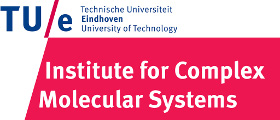Team:TU-Eindhoven/MRIProcessing
From 2013.igem.org
Pascalaldo (Talk | contribs) (Created page with "{{:Team:TU-Eindhoven/Template:Base}} {{:Team:TU-Eindhoven/Template:MenuBar}} =MRI Data Processing= {{:Team:TU-Eindhoven/Template:Lead}}Until recently, the most common way of gen...") |
Pascalaldo (Talk | contribs) (→The Principle) |
||
| Line 6: | Line 6: | ||
==The Principle== | ==The Principle== | ||
| - | This new type of MRI goes by the name Chemical Exchange Saturation Transfer MRI or CEST MRI. | + | This new type of MRI goes by the name Chemical Exchange Saturation Transfer MRI or CEST MRI. The principle behind this technique is based on compounds that contain pools of exchangeable protons that can be selectively saturated using radiofrequency (RF) irradiation. Upon proton exchange with bulk water, these compounds can be indirectly visualized by measuring the bulk water. |
==References== | ==References== | ||
Revision as of 20:35, 2 October 2013



MRI Data Processing
Until recently, the most common way of generating MRI contrast was by using heavy metal based contrast agents. Examples of these substances are the commercial Gadolinium(III) based Magnevist and the Iron Oxide based Resovist. A very obvious downside of using heavy metals is the toxicity of the agents in the human body. Fortunately, a new type of MRI has been developed, which allows for the use of organic compounds as contrast agent .
The Principle
This new type of MRI goes by the name Chemical Exchange Saturation Transfer MRI or CEST MRI. The principle behind this technique is based on compounds that contain pools of exchangeable protons that can be selectively saturated using radiofrequency (RF) irradiation. Upon proton exchange with bulk water, these compounds can be indirectly visualized by measuring the bulk water.
References
 "
"



